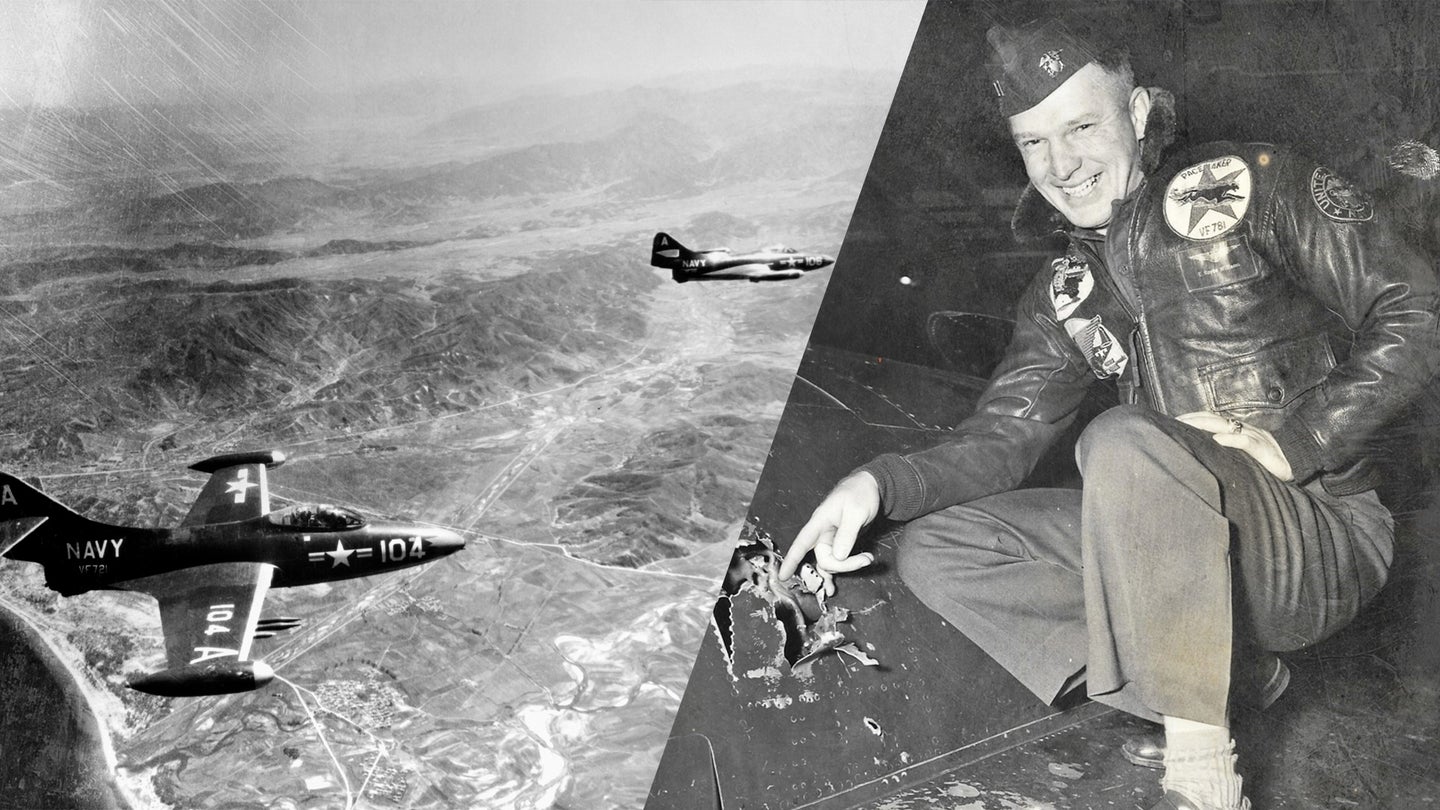The US Navy has announced that retired Navy Capt. E Royce Williams has been awarded the Navy Cross by Secretary of the Navy (SECNAV) Carlos Del Toro for his heroics on November 18, 1952.
Shooting Down A Dozen B-52 Bombers, Meet The Russian Missile That Almost Sparked A US-Russia Nuclear War
This honor is an upgrade of the Silver Star Medal that then-Lt. Williams was given on May 7, 1953, in recognition of his services during the Korean War, where he dogfought seven MiG-15s of the enemy while commanding a division of three fighter aircraft, the Navy said.
“Having reviewed the findings of numerous investigations related to the case of Capt. Royce Williams, I have determined this case to be special and extraordinary,” said Del Toro.
“Lt. Williams took the lead of an incredibly critical mission during the Korean War, which led to the protection of Task Force 77 from enemy attack. I authorize the Navy Cross to be awarded for his courageous actions committed from personal bravery and self-sacrifice to the country. His actions clearly distinguished himself during a high-risk mission and deserved proper recognition,” Toro added.
In the skies over North Korea seventy years ago, US Navy fighter pilot Royce Williams engaged in arguably the longest aerial duel in US military history.
On November 18, 1952, Williams and three other F9F-5 Panther pilots were tasked with conducting a combat air patrol over the Yalu River, which divided the territory of North Korea and the Soviet Union.

At the time, the Soviets were not involved in the conflict and were not considered a threat. However, they were deploying military jets into the skies to safeguard their airspace.
Williams and his patrol team discovered seven unidentified aircraft. However, the division leader of the four-plane patrol team had an engine failure and retreated to the US Navy aircraft carrier with his wingman, leaving Williams and his wingman.
Williams identified the unidentified aircraft as Soviet MiG-15s when they flew overhead.
Williams and his partner aircraft were told to return to the fleet and form an aerial wall to defend the US Navy ships. However, they soon found themselves “bracketed” at 26,000 feet by the MiGs, and four started firing at the two Navy planes.
Williams’ wingman managed to escape and successfully return to the fleet, but Williams was encircled. Consequently, Williams faced the almost impossible task of surviving a “7v1” engagement, which stands for seven aircraft against one.
He engaged alone in a 35-minute aerial duel with seven Soviet MiG-15 pilots, shooting down at least four Russian aircraft before making his way away and landing his severely damaged F9F-5 Panther jet on a US aircraft carrier.
A Forgotten Hero
Since 2014, there has been a campaign to honor Williams for his bravery by awarding him the Medal of Honor. However, the US Navy and National Security Agency scrubbed the incident from their records. Therefore, it was not mentioned in the declassified American archives for the Korean War.
The US was concerned that admitting the incident may involve the Soviets in the Korean War. Williams continued to serve in the Navy for an additional 23 years, flying 110 sorties during the Vietnam War.
He retired in 1975 with a display case full of awards, including the Silver Star, two Distinguished Flying Crosses, and the Legion of Merit with combat “V.”
He kept the dogfight a secret from everyone, including his wife Camilla and his pilot brother, until the early 2000s, when the Korean War archives were formally declassified.
Although there is no trace of the dogfight in released US archives from the Korean War, the air battle was detailed in Soviet documents. Those records were released after the Soviet Union disintegrated in the early 1990s.
In 2014, Russian military historian Igor Seidov published “Red Devils Over the Yalu: A Chronicle of Soviet Aerial Operations in the Korean War,” which included a chapter on the dogfight. Four were brought down by a single American aircraft, one was shot up and crashed while returning, and the seventh was never located.
Nevertheless, Royce Williams had downed four MiG-15s in a single encounter, still considered one of the biggest achievements in US military aviation history.
Given that the F9F-5 Panther was outclassed and outpaced by the MiG-15 on all fronts – speed, maneuverability, and weaponry – it was a record-breaking performance.
- Contact the author at ashishmichel(at)gmail.com
- Follow EurAsian Times on Google News